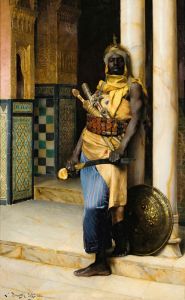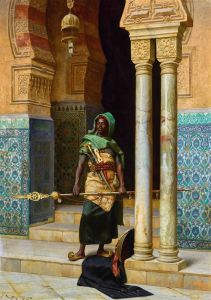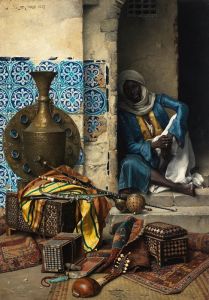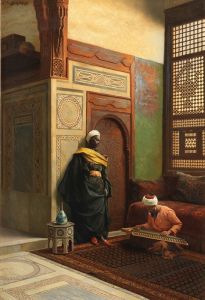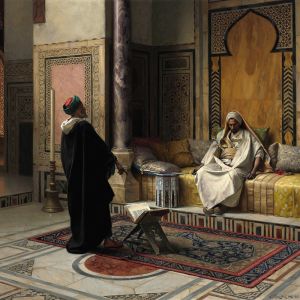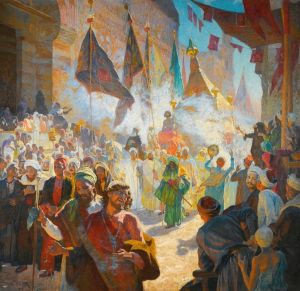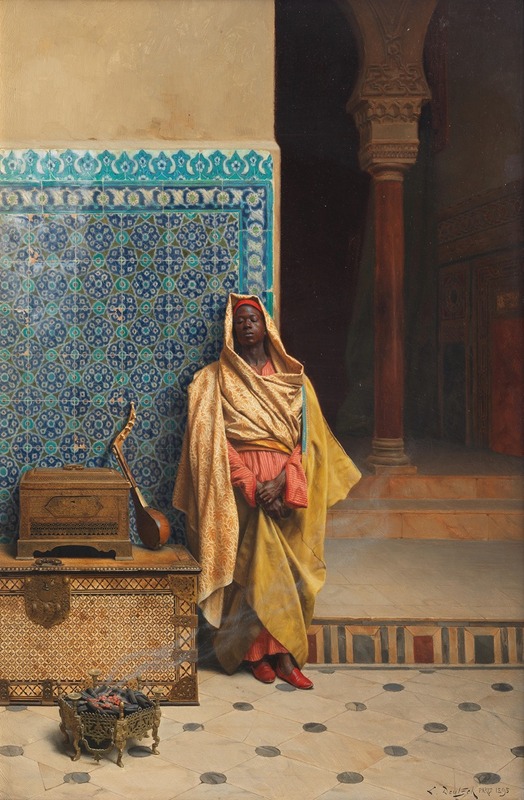
At the Mosque
A hand-painted replica of Ludwig Deutsch’s masterpiece At the Mosque, meticulously crafted by professional artists to capture the true essence of the original. Each piece is created with museum-quality canvas and rare mineral pigments, carefully painted by experienced artists with delicate brushstrokes and rich, layered colors to perfectly recreate the texture of the original artwork. Unlike machine-printed reproductions, this hand-painted version brings the painting to life, infused with the artist’s emotions and skill in every stroke. Whether for personal collection or home decoration, it instantly elevates the artistic atmosphere of any space.
Ludwig Deutsch was an Austrian painter known for his Orientalist works, and "At the Mosque" is one of his notable paintings. Created in the late 19th or early 20th century, this painting exemplifies Deutsch's meticulous attention to detail and his fascination with Middle Eastern culture. Deutsch was part of a group of European artists who were captivated by the exoticism of the East, and his works often depicted scenes of daily life, architecture, and people in the Islamic world.
"At the Mosque" is a fine example of Deutsch's ability to capture the intricate details of Islamic architecture and the solemnity of religious practice. The painting typically portrays a serene and contemplative scene within a mosque, highlighting the spiritual atmosphere of the setting. Deutsch's use of light and shadow, along with his precise rendering of textures and patterns, brings a sense of realism and depth to the scene.
Deutsch's works are characterized by their photographic realism, achieved through his skillful use of color and composition. In "At the Mosque," he likely employed a rich palette to emphasize the opulence of the mosque's interior, with its ornate decorations and intricate tile work. The figures in the painting are often depicted in traditional attire, engaged in prayer or reflection, which adds to the authenticity and cultural richness of the scene.
Ludwig Deutsch was part of the Orientalist movement, which was popular in Europe during the 19th century. This movement was fueled by a fascination with the cultures and landscapes of North Africa, the Middle East, and Asia. Artists like Deutsch traveled to these regions or studied artifacts and photographs to create their works. While Orientalism has been critiqued for its romanticized and sometimes stereotypical portrayals of Eastern cultures, Deutsch's paintings are often praised for their technical mastery and attention to detail.
Deutsch was born in Vienna in 1855 and studied at the Academy of Fine Arts in Vienna before moving to Paris, where he spent most of his career. His works were well-received during his lifetime, and he exhibited regularly at the Paris Salon. Today, his paintings are held in various private and public collections, and they continue to be appreciated for their artistic quality and historical significance.
"At the Mosque" reflects Deutsch's dedication to capturing the beauty and complexity of Islamic culture. Through his art, Deutsch offered a glimpse into a world that was both foreign and fascinating to his European audience. His paintings remain a testament to the cross-cultural exchanges that characterized the Orientalist movement and continue to be studied for their artistic and cultural insights.





